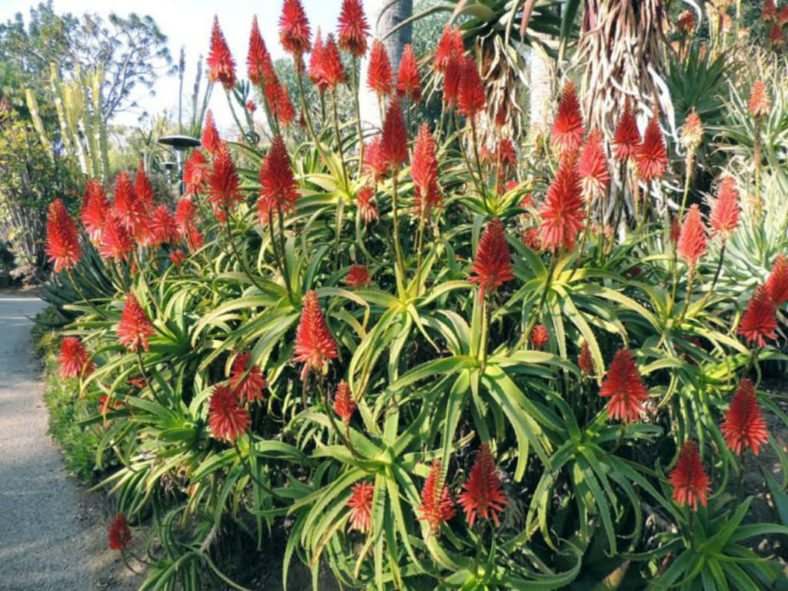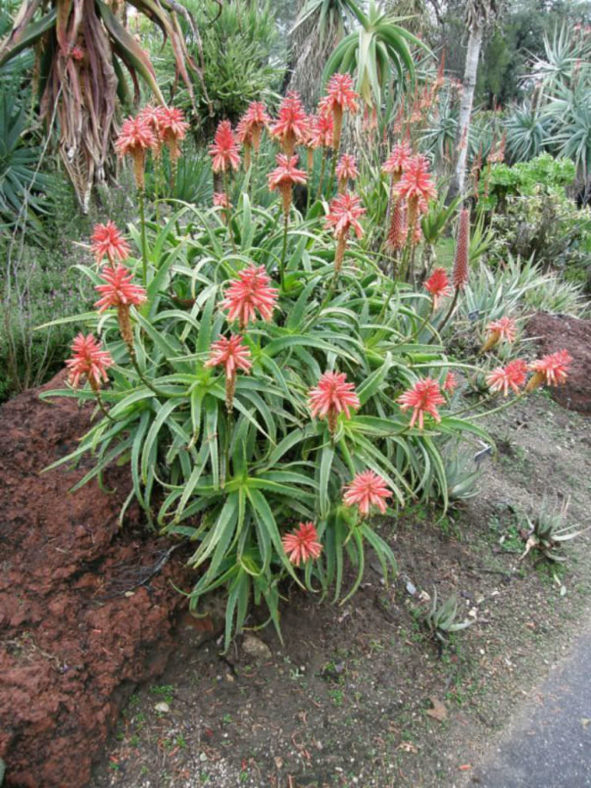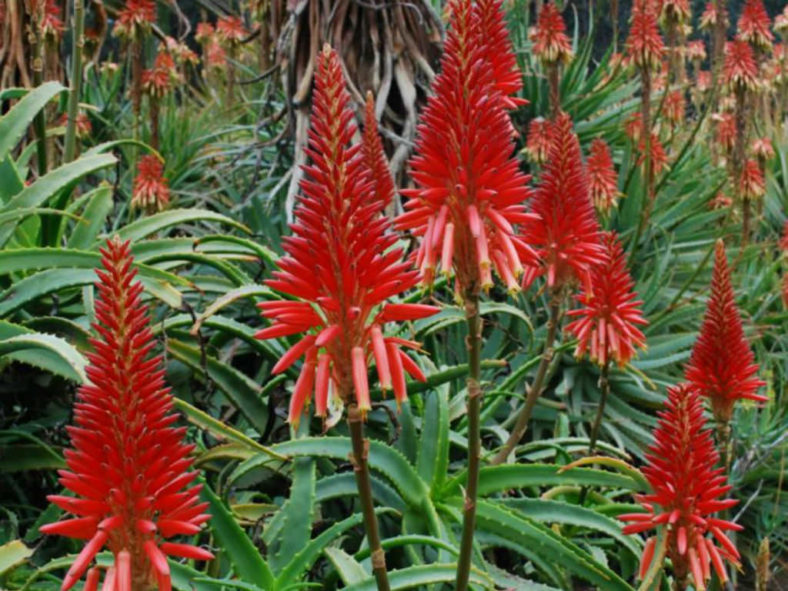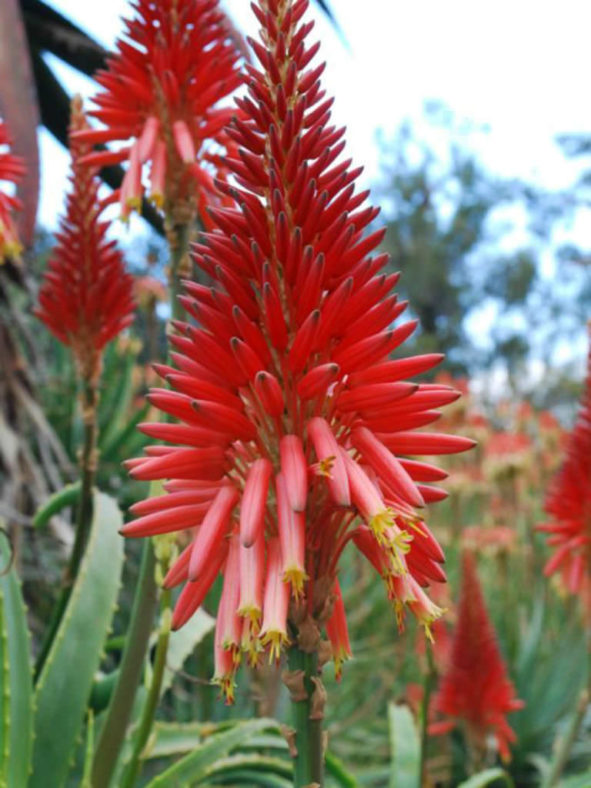Scientific Name
Aloe scorpioides L.C.Leach
Scientific Classification
Family: Asphodelaceae
Subfamily: Asphodeloideae
Genus: Aloe
Origin
Aloe scorpioides is native to Angola. It grows in wooded areas in large colonies on rocky slopes or moderately shaded areas.
Description
Aloe scorpioides is a shrubby succulent with pale green to yellowish-green leaves arranged in loose rosettes at the end of the branches. It grows up to 4 feet (1.2 m) tall, branching from the base or above. The leaves are narrow, recurved, with prominent, widely spaced teeth, measuring up to 12 inches (30 cm) in length and 1.4 inches (3.5 cm) in width.
The flowers are scarlet with yellow stripes and can reach up to 1.1 inches (2.8 cm) in length and 0.3 inches (0.7 cm) in diameter. In winter, they appear in dense conical racemes on usually simple stalks.

Hardiness
USDA hardiness zones 9b to 11b: from 25°F (−3.9°C) to 50°F (+10°C).
How to Grow and Care
Aloe is a forgiving plant; a well-grown Aloe can be pretty beautiful. However, as with all succulents, Aloe must never be allowed to sit in stagnant water, and the plant should be carefully monitored to watch for signs of overwatering. Water generously in the summer and nearly cease watering in the winter. Do not let water stand in the rosettes. It prefers warmer temperatures of 70ºF to 80ºF (21ºC to 27ºC) but will survive down to 40ºF (4.5ºC).
Aloes are not particularly fast-growing and will only rarely need repotting. Repot plants in the spring that are tipping over their pots or have ceased growing. Use a fast-draining potting mix with one-third sand or pebbles. When repotting a larger plant, dividing the root ball carefully is possible. Some kinds of Aloe will send off offsets that can be potted independently.
See more at How to Grow and Care for Aloe.
Links
- Back to genus Aloe
- Succupedia: Browse succulents by Scientific Name, Common Name, Genus, Family, USDA Hardiness Zone, Origin, or cacti by Genus
Photo Gallery
Click on a photo to see a larger version.


